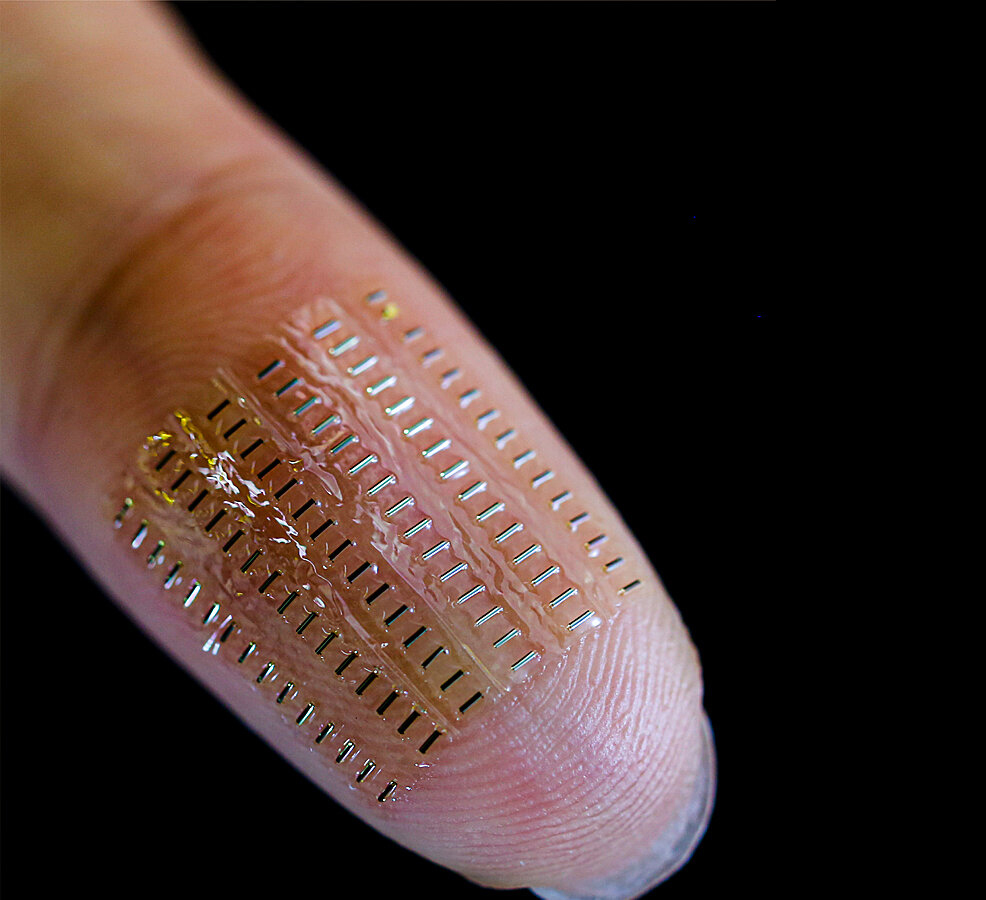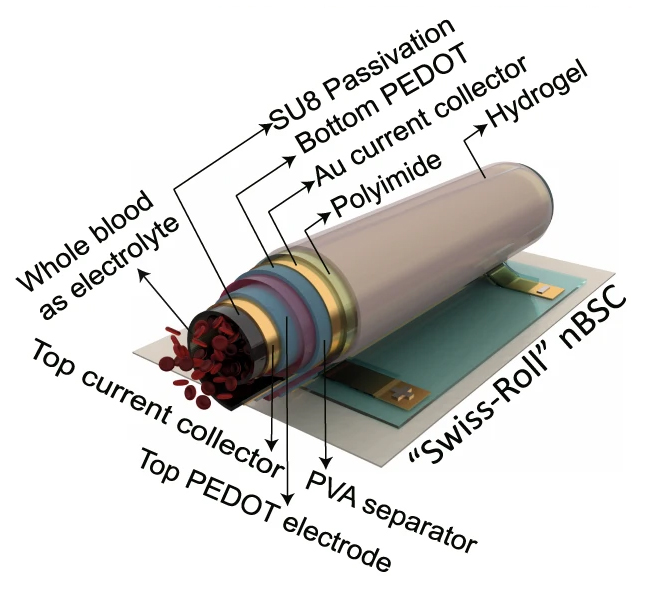
26th August 2021 Dust-sized supercapacitor has voltage of AAA battery Scientists in Germany have developed the smallest microsupercapacitors to date, which can function in blood vessels and could provide an energy source for tiny sensors.
The miniaturisation of sensor technology, robots and intravascular implants is progressing rapidly. However, it also poses major challenges for research. One of the biggest is the development of tiny but energy efficient storage devices. These are needed to enable the operation of autonomously working microsystems at smaller and smaller scales. In addition, these energy storage devices must be bio-compatible if they are to be used in the body at all. Devices in the submillimetre range – so-called "nano-supercapacitors" – allow the shrinkage of electronic components to tiny dimensions. However, they are difficult to produce and do not usually incorporate biocompatible materials. Corrosive electrolytes, for example, can quickly discharge themselves in the event of defects and contamination. So-called "biosupercapacitors" (BSCs) offer a solution. These have two outstanding properties: full biocompatibility, which means they can be used in body fluids such as blood, and compensation for self-discharge behaviours through bio-electrochemical reactions. In other words, they can actually benefit from the body's own reactions. This is because, in addition to typical charge storage reactions of a supercapacitor, redox enzymatic reactions and living cells naturally present in the blood can increase the performance of a device by 40%. Shrinking these devices down to submillimetre sizes, while maintaining full biocompatibility, has been enormously challenging. Now, scientists have created a prototype that combines both essential properties.
Until now, the smallest of these energy storage devices had been at least 3 mm³. But a team led by Oliver Schmidt, Professor of Material Systems for Nanoelectronics at Chemnitz University, Germany, has successfully built a "nano-biosupercapacitor" (nBSC) of just 0.001 mm³ (1 nanolitre). This is 3,000 times smaller than previous efforts, with a volume comparable to a speck of dust. Yet it delivers up to 1.6 V of supply voltage for microelectronic sensors. The new storage device opens up possibilities for intravascular implants and microrobotic systems for next-generation biomedicine that could operate in small or hard-to-reach spaces deep inside the human body. These nBSCs could allow real-time detection of blood pH and help predict early tumour growing, for example. The team studied the nBSC's performance in so-called microfluidic channels – similar to a wind tunnel – with diameters of 120 to 150 µm (0.12 to 0.15 mm) to mimic blood vessels of different sizes. In these channels, they simulated and tested the behaviour of their energy storage devices under different flow and pressure conditions. They found that the nano-biosupercapacitors provided power well and stably under physiologically relevant conditions. "The tubular geometry of this nano-biosupercapacitor provides efficient self-protection against external forces from pulsating blood or muscle contraction," the study authors write. The researchers then developed a pH sensor, supplied with energy by the nano-biosupercapacitor. They used 5 µm thin film transistor (TFT) technology to create a ring oscillator featuring exceptional mechanical flexibility, with tiny changes in output frequency depending on the pH of the electrolyte. This fully integrated and ultra-compact system of energy storage and sensor provided accurate and efficient blood pH measurement. "It is extremely encouraging to see how new, extremely flexible, and adaptive microelectronics is making it into the miniaturised world of biological systems," said Professor Schmidt. Co-author Dr. Vineeth Kumar also commented: "The architecture of our nano-biosupercapacitors offers the first potential solution to one of the biggest challenges – tiny integrated energy storage devices that enable the self-sufficient operation of multifunctional microsystems." An open access paper on the breakthrough appears this week in the journal Nature Communications.
Comments »
If you enjoyed this article, please consider sharing it:
|








